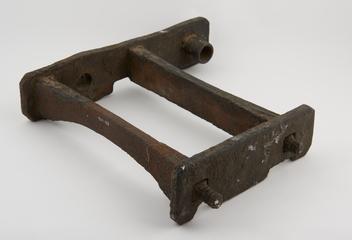Remains of a Cornish pumping engine
1777








Remains of a Cornish pumping engine, viz "Old Bess", with associated pipe connector, cylinder footing, drain tank, iron frame, and wooden base, by Boulton, Watt and Company and Soho Manufactory, England, 1777
The parts here preserved belonged to the "Old Bess” pumping engine which was erected in 1777 by James Watt at Matthew Boulton's manufactory, Soho, near Birmingham. The engine embodied the separate condenser, the first improvement made by Watt upon Newcomen's engine. Boulton when Watt first knew him was a manufacturer of ornamental metal articles and used water-wheels to drive his machinery. In dry weather when the flow diminished six to ten horses had to be brought in to assist; to lessen such expense, this pumping engine was installed to pump water from the tail race back to the head race
1777

1777

1777

1777
1777
1777







